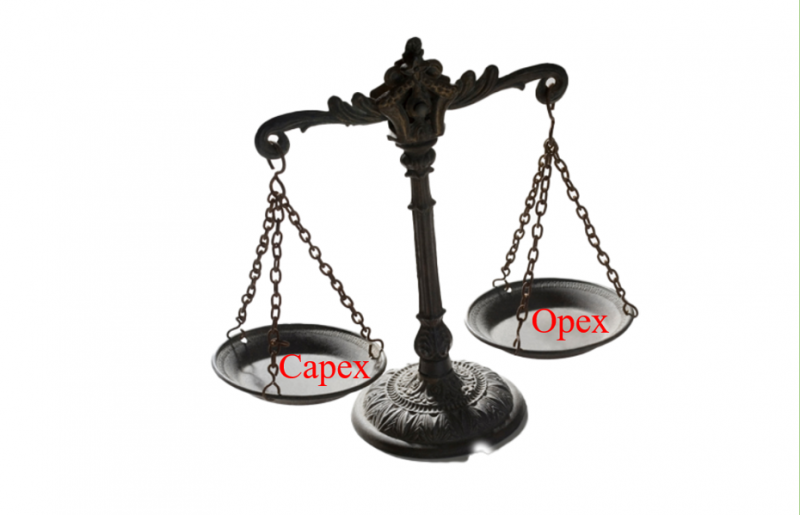Opex Is The New Capex!

There’s a huge amount of construction work currently being undertaken in Australia. It’s Keynesian in scale, almost akin to the public works Roosevelt initiated in the United States to alleviate mass unemployment in 1930s. And, when appraising schemes to obtain funding, a huge amount of analytical effort understandably goes into costing capital assets (Capex), but the ongoing liability, the operating costs (Opex), often receives relatively scant attention.
Last week, we raised this issue with a friend.
‘Everyone loves something tangible’, he replied. ‘A new road or power station shows people their tax dollars are being visibly invested. Who’s going to feel excited if someone says to them “I spent your money on better maintaining pipes?” That’s not shiny or impressive. They don’t scream ‘achievement’.
It’s hard not to see where he is coming from. Come election time, if a politician can say ‘I’ve given you all a brand-new bridge’, the electorate is likely to cheer. Saying ‘I’ve maintained an extra four thousand kilometres of cables to a higher standard’ could well lead to a mass yawn. When winning votes is the goal, the smart decision is to ensure that people can physically see an administration’s achievements.
Voting for someone, however, isn’t just about what they’ve given you. It’s also about what they have taken away or denied you relative to others. The scales need to balance. One eventually learns that the wisdom passed down the generations is relevant to their own times. There isn’t such a thing as a free lunch; the piper has to be paid.
It’s likely most people of Montreal know that for all the kudos of the 1976 Olympic games, they are still paying for it, and that’s meant sacrificing a lot. The world did indeed cast its gaze on the city for two weeks when Nadia Comaneci stormed to numerous golds. But that might be of scant consolation when the trade-off has been reduced public services and higher taxes. The new buildings start to look tired; and a whole generation comes though who have little idea as to whom Nadia was. Only the politicians of the time got to open the games. Many more have since paid the price of the political capital when trying to patch up the fiscal legacy.
Most voters do love shiny new infrastructure, but they aren’t partial to long waits for operations, power cuts, larger class sizes, potholes, and diminishing social care, and at this point the unglamorous maintenance, operations, and staffing cease being boring. They’re issues that have sunk many an administration. The stunning new state-of-the-art hospital doesn’t have such a ‘wow!’ factor when the wait for a hip operation is three years and there aren’t enough nurses.
The tension between high-rolling politicians, and fiscally conservative keepers of the purse is long standing, but, behind the scenes, the counters of beans do have to ensure a state is in good financial shape, not drowning in debt or having to slash public services. Furthermore, when the providers of a public service – be it a building or operations - are private entities, governments need to ensure the service quality/profitability trade-offs appear reasonable. Breaking the undercarriage of one’s car in a pothole is less palatable when the firm responsible for maintaining the road is making a tonne of cash. Like it or not, as unexciting as they sound, things such as contractual transparency, value for money procurement, outsourcing, appropriate regulation, and rigorous asset condition monitoring do have strong political relevance.
The ‘best’ fiscal solution even if it may not always align with immediate political imperatives, is making sure when a decision is made to build something and/or outsource operations, that there has been sufficiently transparent forecasting to ensure that the lifecycle cost - what something costs over the whole of its useful life – has been optimised with the most manageable risk profile. Lifecycle cost is an aggregation of operating and capital cost - quality procurement does not mean cheap, or expedient at point of purchase, but best value.
To do this rigorously the modelling of an asset or services’ Opex, is as important as costing the asset and getting it built. Fragmenting opex and capex makes white elephants more likely. When for expediency a decision is made to crowbar capital works into an operating contract, or for short term cost control commission a builder whose bid price is the lowest, don’t expect optimal outcomes. Do the maths on the whole of the project’s life to understand public value. Make sure the new toy doesn’t break after three years unless it’s cheap to replace. And capital assets generally aren’t.
With such a scale of building underway it’s likely that in the coming decade opex will indeed become the new capex.
For more information contact
Dr David Ashmore, Senior Associate, TSA Advisory and Adjunct Research Fellow at the Research Centre for Integrated Transport Innovation (rCITI)
Email: d.ashmore@unsw.edu.au; david.ashmore@tsamgt.com
Professor S. Travis Waller, Head, School of Civil and Environmental Engineering and member of the Research Centre for Integrated Transport Innovation (rCITI)
Email: s.waller@unsw.edu.au




